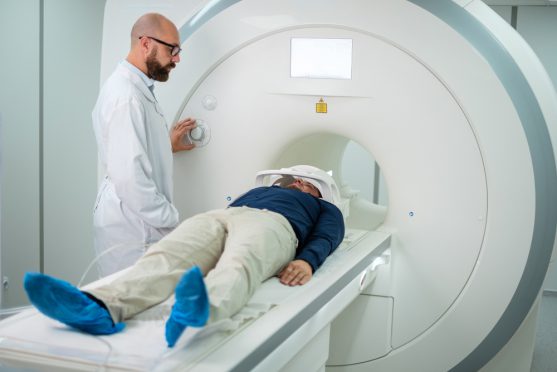Magnetic Resonance Imaging (MRI) is a type of scan that uses a magnetic field and radio waves to produce detailed images of the organs and tissues in your body.
It can capture images of different parts of the body including:
Your oncologist might use an MRI scan for one or more of the below reasons:
Based on the above information, your oncologist can plan the next steps of your cancer treatment.


No, MRIs are not painful.
Some people who are scared of closed spaces might panic during an MRI.
The MRI machine can be loud. This might cause a bit of discomfort but most patients are able to tolerate it.
If you suffer from extreme anxiety before such scans or diagnostic tests, you can use some relaxation tips from our article on scanxiety.
Although a CT scan and an MRI can be used for the same purpose in some cases, they are not the same thing. A CT scan uses X-rays to capture images, while an MRI uses magnets and radio waves.
A CT scan is more widely used and is less expensive than an MRI.
Sometimes, doctors prescribe an MRI scan when the CT scan is unable to provide the required amount of information.
In some types of cancer, like the brain, spinal cord or cervix, an MRI is preferred to a CT scan as it can produce clearer results than a CT scan. Basically, they are better in characterizing any soft tissue lesion.
You can read about preparing for a PET scan here.
కీమోథెరపీ కోసం క్యాన్సర్ రోగులు ఎలాంటి దుస్తులు ధరించాలో తెలుసా? ఈ ఆర్టికల్లో, క్యాన్సర్ రోగులకు కీమోథెరపీని సౌకర్యవంతంగా పొందడంలో సహాయపడే దుస్తుల జాబితాను అందించాము.
ఈ కథనం మీ క్యాన్సర్ రకానికి సరైన క్యాన్సర్ వైద్యుడిని కనుగొనడానికి 6-దశల గైడ్ను వివరిస్తుంది.
तंबाकू का सेवन गुटका, जर्दा, पैन मसाला आदि के रूप में करना सिर और गले के कैंसर का मुख्य कारण…
నోటి పుండ్లతో బాధపడుతున్న క్యాన్సర్ రోగులకు క్యాన్సర్ చికిత్సలో ఉన్నప్పుడు తీసుకోవాల్సిన 12 ఉత్తమ ఆహారాలు.
క్యాన్సర్కు కారణమయ్యే 6 జీవనశైలి కారకాలు గురించి ఈ కథనంలో వివరంగా ఇవ్వబడ్డాయి. అవి ఏమిటో తెలుసుకోండి!
शोध की मानें तो न्यूज़पेपर प्रिंट करने में जो स्याही का इस्तेमाल होता है उसमें ऐसे केमिकल होते हैं जो…